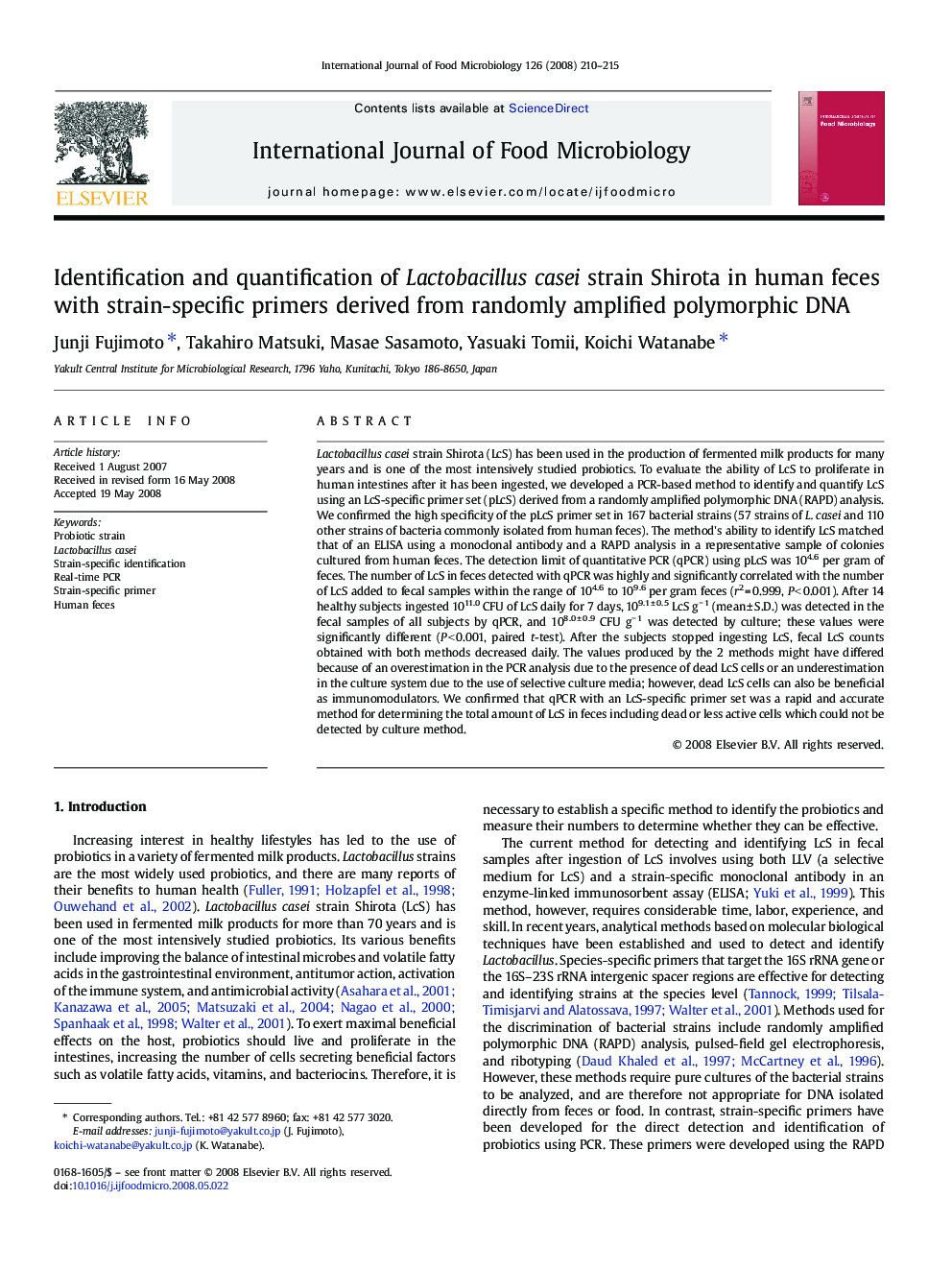| Article ID | Journal | Published Year | Pages | File Type |
|---|---|---|---|---|
| 4369018 | International Journal of Food Microbiology | 2008 | 6 Pages |
Lactobacillus casei strain Shirota (LcS) has been used in the production of fermented milk products for many years and is one of the most intensively studied probiotics. To evaluate the ability of LcS to proliferate in human intestines after it has been ingested, we developed a PCR-based method to identify and quantify LcS using an LcS-specific primer set (pLcS) derived from a randomly amplified polymorphic DNA (RAPD) analysis. We confirmed the high specificity of the pLcS primer set in 167 bacterial strains (57 strains of L. casei and 110 other strains of bacteria commonly isolated from human feces). The method's ability to identify LcS matched that of an ELISA using a monoclonal antibody and a RAPD analysis in a representative sample of colonies cultured from human feces. The detection limit of quantitative PCR (qPCR) using pLcS was 104.6 per gram of feces. The number of LcS in feces detected with qPCR was highly and significantly correlated with the number of LcS added to fecal samples within the range of 104.6 to 109.6 per gram feces (r2 = 0.999, P < 0.001). After 14 healthy subjects ingested 1011.0 CFU of LcS daily for 7 days, 109.1 ± 0.5 LcS g− 1 (mean ± S.D.) was detected in the fecal samples of all subjects by qPCR, and 108.0 ± 0.9 CFU g− 1 was detected by culture; these values were significantly different (P < 0.001, paired t-test). After the subjects stopped ingesting LcS, fecal LcS counts obtained with both methods decreased daily. The values produced by the 2 methods might have differed because of an overestimation in the PCR analysis due to the presence of dead LcS cells or an underestimation in the culture system due to the use of selective culture media; however, dead LcS cells can also be beneficial as immunomodulators. We confirmed that qPCR with an LcS-specific primer set was a rapid and accurate method for determining the total amount of LcS in feces including dead or less active cells which could not be detected by culture method.
